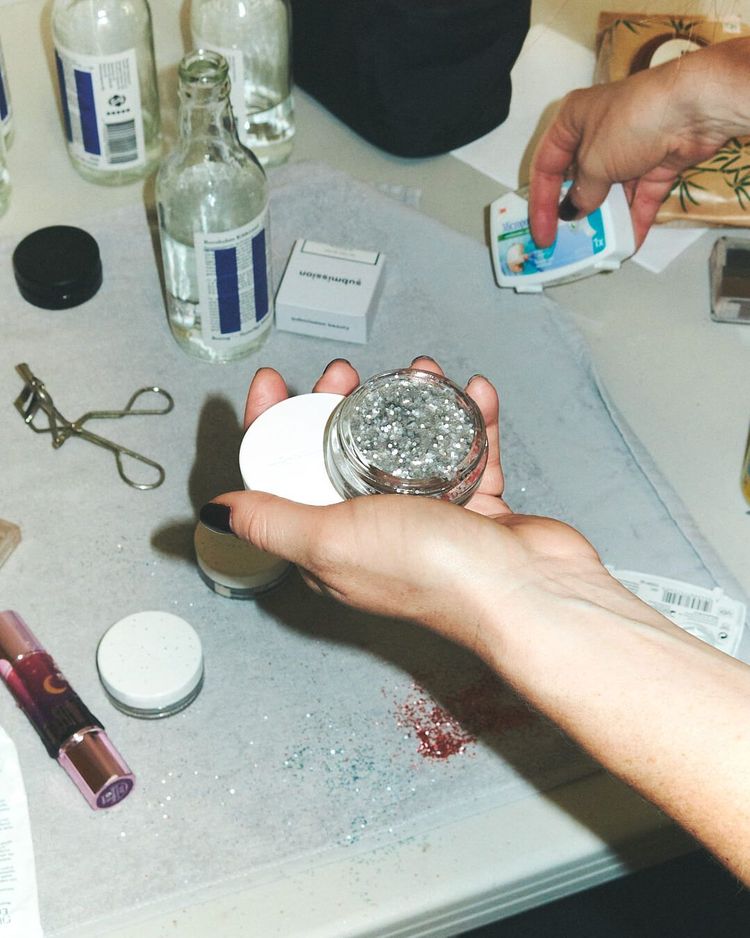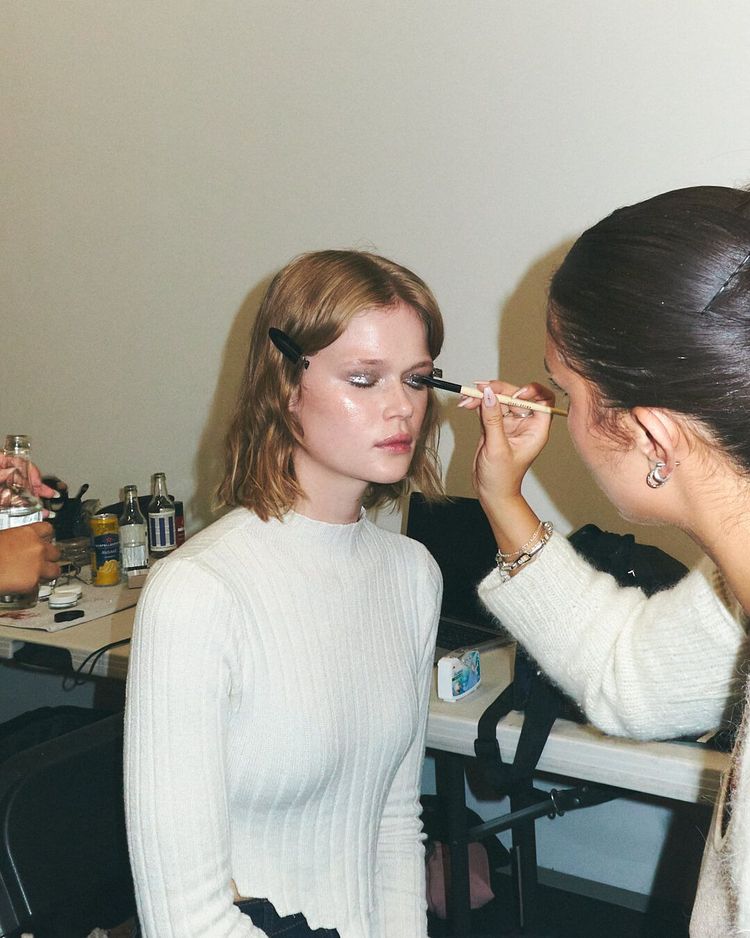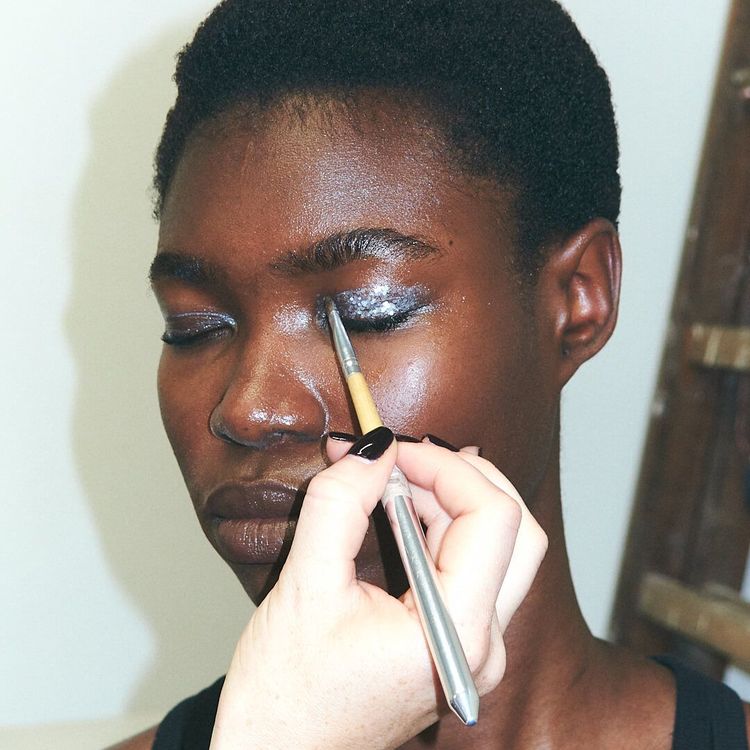Zenia Jaeger, Danish founder of LA-based plastic-free brand Submission Beauty and Ditte Reffstrup of Ganni weigh in on the new glitter ban in the EU
While glitter may add some much needed sparkle into our lives, anyone who has a young child – or simply loves to embrace the glitz – knows just how difficult it is to get rid of afterwards. It’s also what makes it so bad for the environment, considering that glitter is typically a form of microplastic: PET or PVC coated with aluminium and plastic film.
Advertisement
“All plastic is pollutive for our planet and health, but microplastic ends up in our waterways,” Zenia Jaeger, founder of plastic-free beauty brand Submission Beauty tells Vogue. “As with all plastic, it doesn’t biodegrade – it just breaks down into smaller and smaller pieces, making it impossible to ‘clean up’ or ‘recycle’ in any way.”
That’s why the EU has now imposed a ban on loose plastic glitter that’s not dissolvable or biodegradable, as part of its wider policy on microplastics, beginning this month. From 2027, rinse-off cosmetics containing loose plastic glitter will also be banned, while leave-on cosmetics will be banned from 2029. Meanwhile, glitter on clothing, where the decoration is considered secondary to the design, is not included in the ban (while a party hat covered in glitter is included, for example).
“Most glitter made of plastic falls into the category of potentially harmful microplastics,” Virginijus Sinkevičius, EU commissioner for the environment, oceans and fisheries, says via email. “They can easily enter water systems, where they are ingested by marine life, leading to internal physical harm. As these particles make their way up the food chain, humans, who are at the top of many food chains, might indirectly ingest these microplastics with consequential damage to human public health.”

Photo: Submission Beauty
The decision sparked a surge of panic buying in Germany earlier this month, as glitter lovers rushed to stock up on supplies ahead of the ban coming into place. But is the end really nigh for glitter? Not so fast. Firstly, the ban does not apply in the UK, now that we’re no longer in the EU. More importantly, there’s now a whole wave of eco-friendly glitter options out there, meaning your sparkle no longer needs to come with an environmental warning.
Jaeger, a make-up artist with 20 years of experience in the industry, decided to set up Submission Beauty in 2020 after becoming frustrated with the lack of truly sustainable options on the market. “There are a lot of brands out there using plant-based and vegan ingredients, but that only addresses certain aspects of sustainability when the products are packaged in unrecyclable, toxic plastic,” she explains.
Submission’s glitter is made using cellulose – the main component found in plant wall cells – from eucalyptus trees, while the packaging made from glass and tin. “[Our] glitter is zero plastic and 100 per cent free from antimony [a type of metal] and aluminium, which makes it FDA-compliant for use on lips and around the eyes – something that standard glitter is not,” Jaeger explains.
The brand’s biodegradable glitter has already caught the attention of Ganni, which launched a limited-edition capsule collection with Submission in October 2022. “I really admire their early approach to plastic-free beauty, so when the opportunity came up to collaborate with them, I instantly jumped at it,” Ditte Reffstrup, Ganni’s creative director, says. “The whole idea was to show how having fun and standing out can go hand in hand with more responsible practices.”

Photo: Submission Beauty
But creating glitter in a sustainable way does come with its challenges. “As the glitter is plant-based, there are limited options in terms of colour,” Jaeger continues. “We often get questions about black glitter, which we hope will be able to make a reality in the future.”
Some eco-friendly glitter also contains mica – a mineral used widely within the beauty industry that has been linked to child labour in countries like India and Madagascar. (The mica in Submission Beauty’s glitter is mined ethically in North America.)
Excitingly, researchers at the University of Cambridge have developed a new-gen glitter, Sparxell, that’s made of 100 per cent plant-based cellulose – by replicating the natural colours seen in certain plants, peacock feathers and even fruit. “We started to work out that we can manipulate cellulose in order to make colour,” explains Silvia Vignolini, professor of chemistry and bio-materials and chief scientific advisor at Sparxell, adding that the glitter is 100 per cent biodegradable.
Now, the challenge is commercialising the technology. “We need to try to scale up the production to make it at a cost that is affordable,” Vignolini continues. “Obviously the way we produce glitter at the moment is much more expensive [than conventional glitter].”
Still, it’s clear that despite the EU’s ban on plastic glitter, there are plenty of eco-friendly options out there. It just goes to show we can still live in a world that’s full of sparkle – without harming the planet.
Originally published on vogue.co.uk
